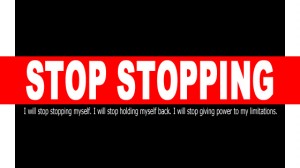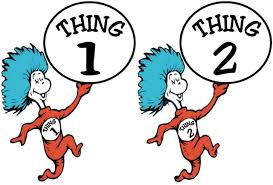May, 2015
We are not taught how to let go! No one teaches us this but everyone seems to say it from time to time: “Just let it go!” Usually our only instruction about letting go happens when we are a toddler and not sharing a toy, hanging on to it for dear life. As a consequence, the toy gets taken away and we hear about how nice children “share”. So it’s no wonder we struggle with how to actually willingly let go of something. 
In today’s article, I will share with you the 2 specific things that prevent us from permanently letting go.
At some point in life, most of us find ourselves searching for resources, tools and techniques for letting go of the past or shifting a repeating pattern. My search has led me to the best experts in the self-help industry and I have tried an “alphabet soup” of supposedly proven techniques. Here are a few that I have tried, many of which I delved very deeply into: The Sedona Method, The Release Technique, EFT –Emotional Freedom Technique or “tapping”, Psych-K, EMDR (Eye Movement Desensitization and Reprocessing), shamanic soul retrieval, and The Healing Codes. I have also heard first-hand accounts from my clients about their experiences with many of these techniques.
The good news is that most of them work, if we work consistently with the system. But the bad news is, they only work up to a point or we stop doing it.
The key to unlocking the doorway to permanent letting go (without the “Bounce-back effect”) is to discover where the stopping point is, and “let go of the stopping”.
I have discovered exactly where the stopping point is. And it is located right inside our physiology. It is NOT, in my experience, in the non-localized mind –i.e. conscious, subconscious or unconscious or in repressed emotions.
This is exactly why all the techniques listed above work only up to a point, and tend to stop working during a big stress-related event. Why?
SPECIFIC THING #1: Because we have a biological tendency to stick with the familiar, especially in times of stress. It is wired into our physiology to reset to old patterns when we encounter an intense or prolonged challenge.
SPECIFIC THING #2: Releasing techniques rely upon only certain parts of our energy anatomy and many are dependent upon a practitioner to do something for us, to us or with us.
For example, the Sedona Method focuses on cognitive and emotional processing. Psych-K focuses on spiritual and cognitive processing with a practitioner facilitating the sessions. EFT focuses on physical, emotional and cognitive processing and can be self or practitioner led. ALL of them require a lot of time, a lot of repetition and a lot of discipline.
What happens along the way when we encounter a stressful event? Discipline is often the first thing to go out the window and then the old habit, thoughts, and feelings creep back in and we find ourselves with the weight back on, or overextended on a credit card or in a similar relationship conflict.
So what to do? I will be sharing the 2 foolproof ways that resolve the issues related to SPECIFIC THING #1 and #2. (Anybody read Dr. Suess’ Cat in the Hat? We will have fun with Thing 1 and Thing 2 in the workshop!)
When you “get” the Thing 1 and Thing 2 antidotes, it will enhance your progress with any other releasing technique and ensure that you don’t stop. And I will also share the Secret Ingredient to Letting Go: it is a specific state of being, both mental and emotional. It’s a state that is easy to cultivate and fun to be in- and it’s not acceptance or gratitude. It requires no meditation, specific breathing or any other outside tool.
The details for the May 30th online and in-person event are listed at the bottom of this article.
Before I close, I want to examine the surefire ways we know we are stuck in old patterns.
These are three signs that indicate that we are NOT yet letting go: 1) Asking “Why is this happening?” , 2) trying to act or pretend that “It’s all good”, and 3) feeling incredulous about what is happening. What does incredulous mean? “Disinclined or indisposed to believe, indicating or showing shock, surprise or disbelief.”
There is actually only one mental/emotional state where the true act of letting go happens, and again, it’s not acceptance and it’s not gratitude!
I know this because the events that occurred for me personally in 2014 led me to dive deeply into the letting go process. In the beginning of 2014, I found myself embroiled in a situation that left me feeling incredulous and asking “Why?” Mid-way through the year, I found the “missing link” to letting go and since then, I have created a very effective multi-dimensional practice to keep the process moving.
So why do issues and challenges have a tendency to bounce back? The answer is very simple – so simple we often complicate the process.
In the first half of 2014, I had been doing what a lot of my clients were reflecting back to me when they would come to my office, throw themselves into the chair opposite me and say “This (relationship conflict, being alone, not getting the job they want etc.. ) HAS TO STOP!, I’m done with it! I’ve let go of “IT”. And then the next month, the same thing would happen. It is immensely frustrating when the “IT”, keeps dragging on, like my situation did with court dates, depositions, and attorney meetings – none of that could just stop.
So what’s the simple answer? It’s found in the analogy of a rubber ball. When we throw a rubber ball at a wall, it just bounces back! It comes back with a lot of force, sometimes it even hits us. That’s what most of us do when we want to let something go. We throw it away with emphasis, force and an exclamation point! This HAS to stop! Some of us are so good at it that we have a strap on our wrist attached to the rubber ball and we don’t even know it!
But, if we learn to let the ball roll softly out of our hand, it just rolls away. It doesn’t come back.
In my workshop/webinar, I will be sharing exactly how to let IT roll away. It involves a very simple process and does not entail a ton of repetition, self monitoring or rating yourself or your feelings on a scale of 1 to 10 or on any scale for that matter!
Please click here for information about the workshop/ webinar. Click here to register. I invite you to have fun with me as we learn new and effective ways to Let Go!






